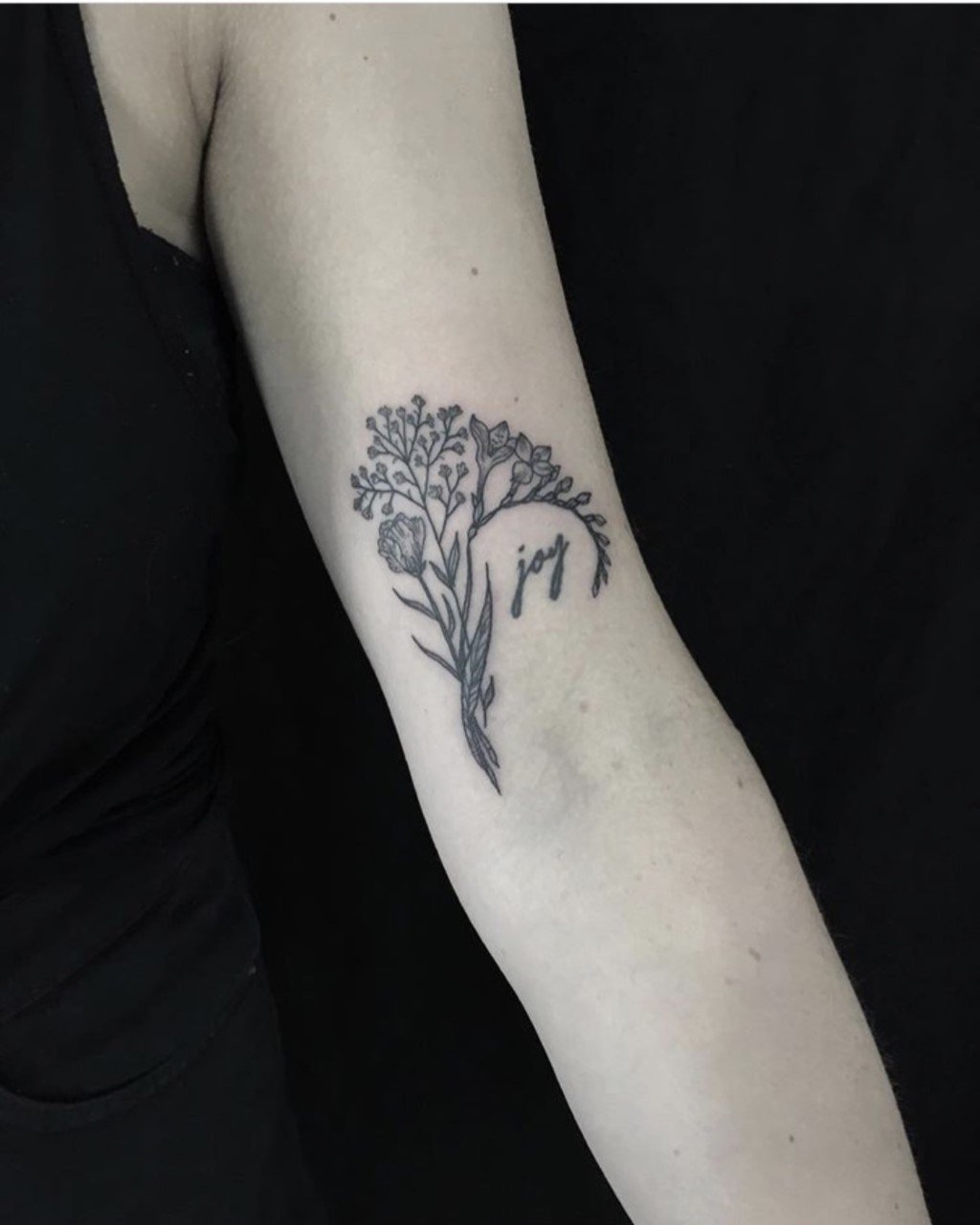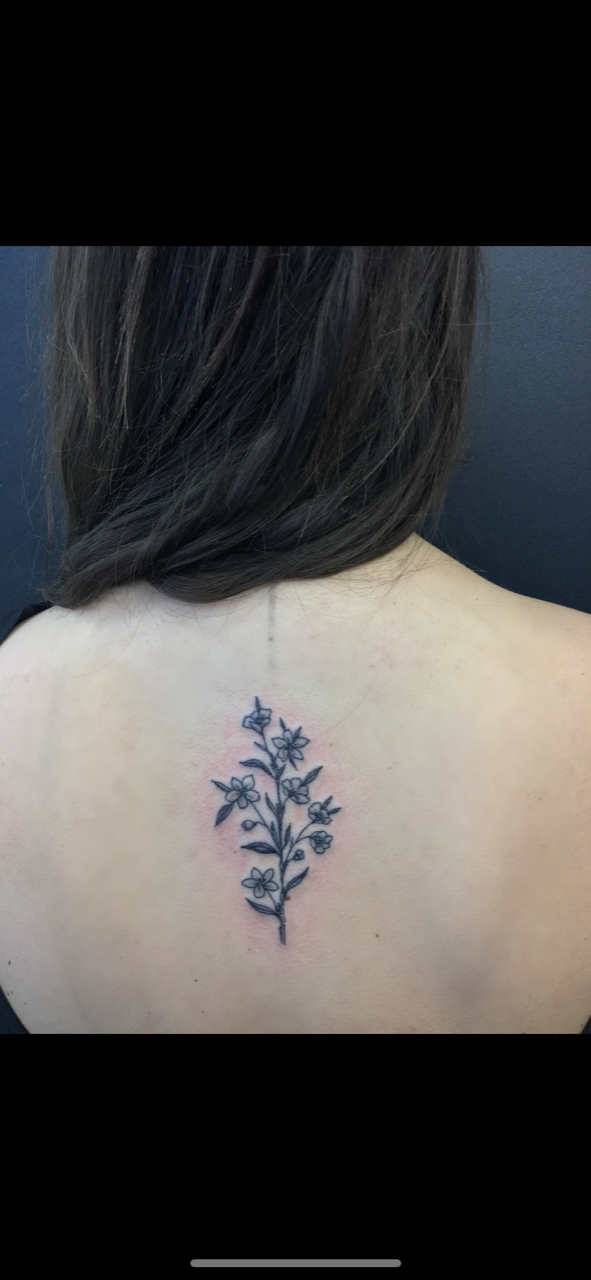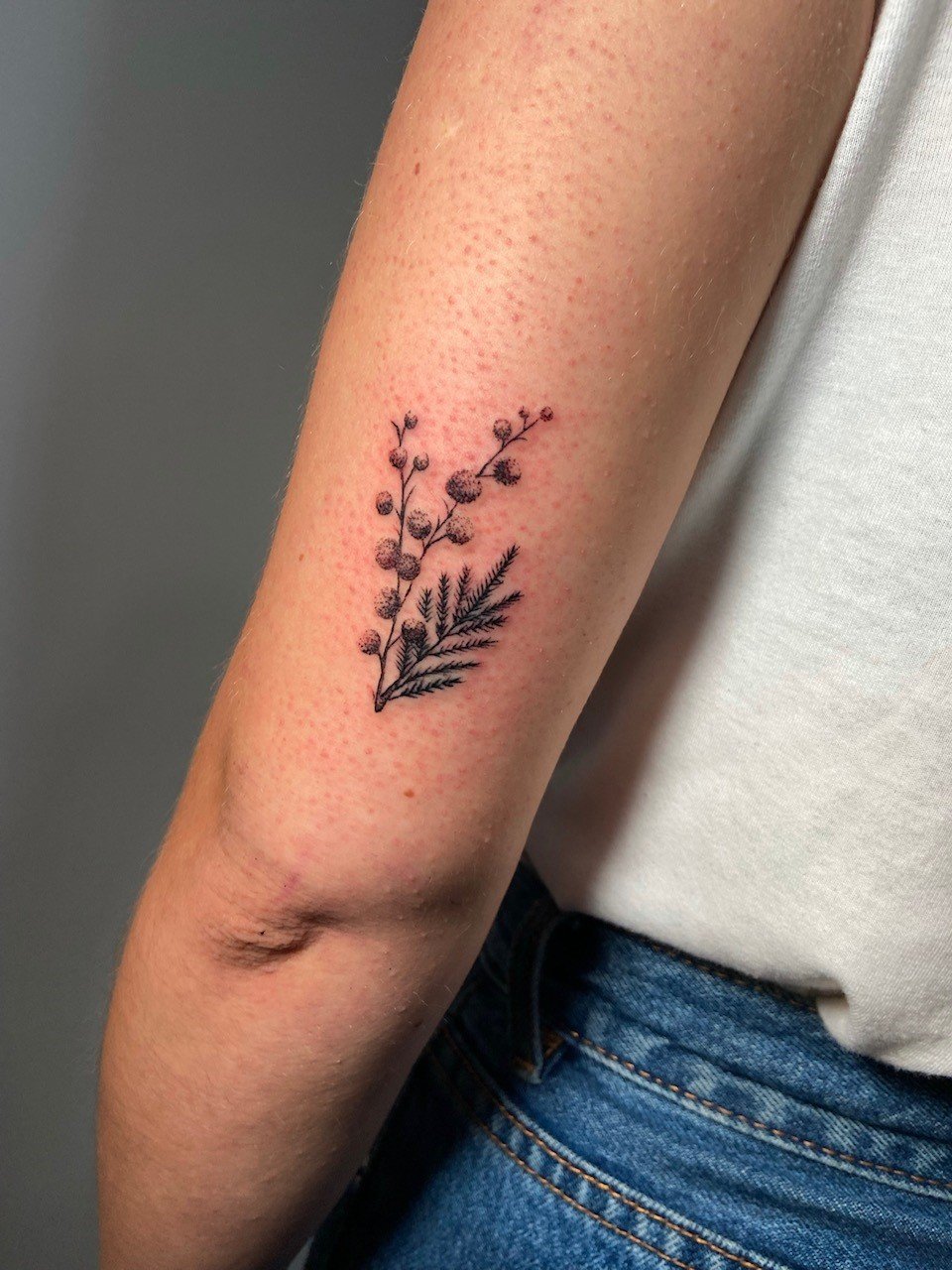Episode 9 Plant Tattoos
Hannah Trott is a florist and runs her own business called Lily and Liz. These are the tattoos that she describes in the podcast. Around the word JOY is her mum’s favourite, a Freesia, which in the language of flowers - means joy and eternal bond. There’s also a Lisianthus which means a lifelong bond between two people and Gypsophila or Baby’s-breath, a symbol of eternal love.
The Mimosa is the international flower for women and Hannah describes her mum as: “a huge feminist, a huge equal rights activist. She was a force of nature, my mum, so it's really nice to have both of those on the same arm because they both represent me and her.”
The cherry blossom on her back is because her Mum always called her ‘Blossom’ but cherry blossom also represents education, something very dear to Hannah’s mum.
These tattoos honour her mum Jo, who passed away when Hannah was 23, in 2015. Jo was a biology teacher who taught at the same school for 27 years - a lifelong teacher who installed a love of plants in her daughter.
Hannah’s best friend is Maya Mathias (on the right) - also a florist and incredibly knowledgeable about Floriography - the language of flowers. She helped Hannah to chose the tattoos with the meanings very much a part of the decision process. This is them on their floristry course. We will be finding out more about the life of a florist from them, in an Offshoot programme of Our Plant Stories.
Once 90% of the Freesias that came to the UK, came from growers in Guernsey. Today Paul Domaille is one of the last people still growing them on the island. He runs Classic Flowers Guernsey. These are photographs of the crop in his greenhouses.
HOW TO GROW FREESIAS with thanks to Paul Domaille
If the corm or bulb has been heat treated, you can plant it in the ground, preferably in the greenhouse, but they will grow in a garden - certainly in the South of England. You might have problems the further North you go.
If they haven't been heat treated, you can keep them somewhere warm. They don't need light, they can be in the dark, keep them in an airing cupboard or something for two or three months, and then bring them out and plant them in the early spring, when the frosts have passed.
Plant them in March, early April, and it should be cool enough for them to form flowers, and you should have flowers by the summer.
Varieties:
If you can buy the old Royal Crown seed, that would be a great one because that is one of the early ones, which has got a lovely scent to it, a lovely perfume. (I have checked and you can find this seed on the internet.)
Where to plant them:
They probably grow anywhere, but I'm sure they will grow better in sun. If you've planted them and it's a bit late and it's getting a bit hot, if you can find a cooler location for them just to make sure that you get that flower bud initiation. If you've planted them in maybe late April, May and the weather's a little too warm, see if you can put them somewhere out of direct sunlight. Keeping the temperature on the plant lower will help that flower to to form inside the bulb.
If you do end up with all leaf and no flower don't lose hope. Let them grow and let the leaves die back and next year they'll go to the natural season and you will have flowers on them.





